Master Lock Model 6B

The Master Lock model 6B is a simple padlock used to lock things up using its pivoted hook to fasten on the selected object, we see them every day, whether if you use it for you high school gym locker room, or if you saw it at your neighbors’ garage or fence. Outside might be Dull silver color padlock, however, its complexity and design are more intricate than you think.
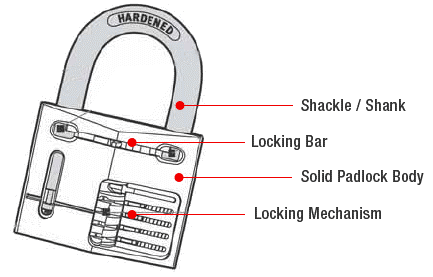
The mechanics and parts of a padlock involve the “Shackle” (or Shank), the Locking Bar, the solid padlock body, and lastly the Locking Mechanism. Each part has a specific use which allows the lock to be significantly strong and secure, for example, the locking mechanism will halt the movement of the locking bar which is containing the shackle due the groves on the shackle, thus making this lock incredibly strong. This item may fit in the palm of your hand with its dimensions of approximately 38-40mm, however its compactness and portability, overshadows its intricate design and complexity itself.
The shackle or shank (Figure 2) is a U-shaped link closed by a bolt. This is used to secure the padlock when initially closing the lock. Then, what basically happens with the shackle is that when inserted into the lock, it will ultimately get stuck because a bolt or “Locking Bar” gets stuck in between the seams of the shackle.
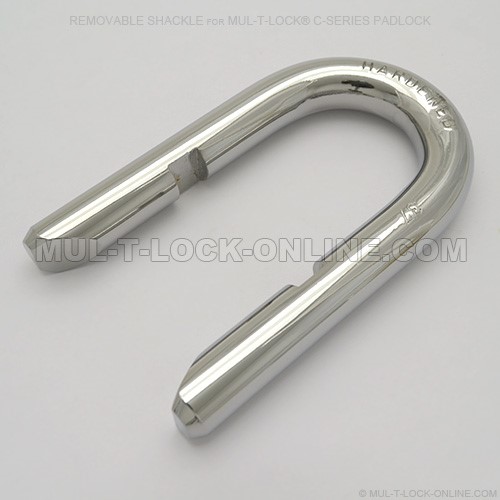
The Locking Bar, as the name is intended, is the bar used to lock the shackle. This is possible by the locking bar getting in between the seams of the shackle, (Notice red circles) which locks the shackle in place and in turn, allow the lock to be safe and secure.
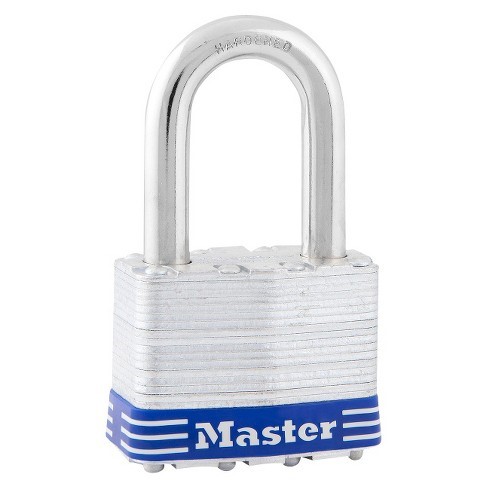
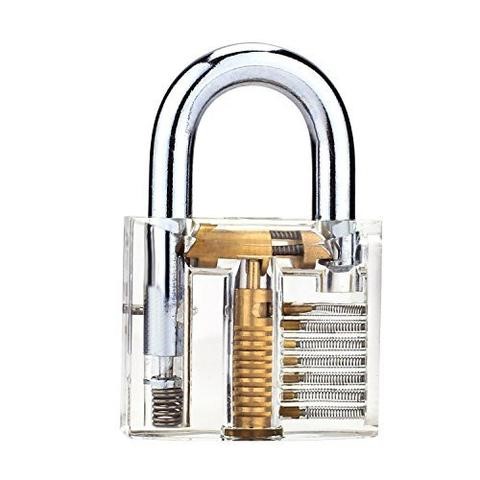
The padlock Body (Figure 3) is probably the straightest forward part of the padlock. The padlock body hides all the mechanisms of the Master Lock Model 6B, usually silver or brown. Nonetheless, a shell for the padlock, if you will.
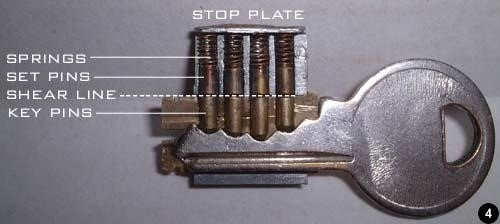
Lastly, and undoubtable the most important part of this padlock, must be the locking mechanism itself. This locking mechanism (Figure 5) is able keep the padlock locked until the correct key (or correct pattern of the key) is inserted in order to release the shackle and in turn open the lock. The locking mechanics includes multiple pins (Model 6B Master Lock has twelve pins) which is pushed to a certain height depending on the locks mechanical configuration, each pin is corresponding with a notch from the key. (This basically means that when the key is inserted in to the lock, the pin is pushed up at a corrected level in which the pin released from the locking mechanism. See Figure 4 below for more detail.) With this said, this is basically the heart of the lock, this is the mechanic that allows a lock to work. It may be small, but it is complex, with its multiple tiny parts and their individual functions.


